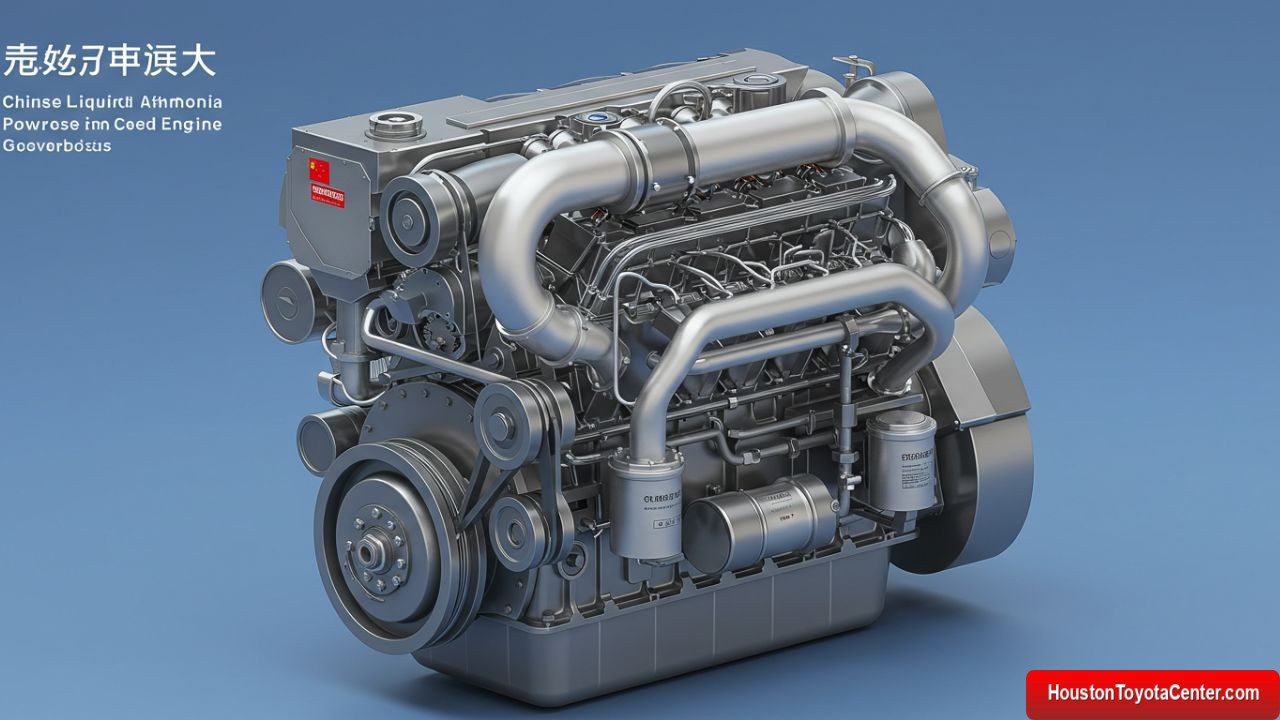Chinese automaker unveils revolutionary new liquid ammonia-powered engine that emits 90% less pollutants than gasoline and could surpass electric cars in range, cost, and logistics.
While the entire world continues to chase electric cars as an inevitable solution to the climate crisis, China appears to have taken a surprising step out of the ordinary. One of its leading automakers, GAC Group, has unveiled a technology that could radically change everything we know about automotive propulsion: a liquid ammonia-powered engine with the performance of a gasoline car but near-zero emissions. The bold and visionary proposal relies on a revolutionary new ammonia-powered engine that promises to be cleaner than traditional combustion engines, more practical than electric vehicles in certain contexts—and possibly cheaper than hydrogen-based solutions .
And, for the first time, this isn’t a theoretical or experimental idea. The prototype is real, functional, and has already been publicly presented with ambitious numbers and goals.
What is China’s new ammonia-powered technology?
The system developed by GAC (Guangzhou Automobile Group) is based on a 2-liter combustion engine, ideal for passenger cars. But instead of gasoline or ethanol, it runs on liquid ammonia, a chemical compound formed by nitrogen and hydrogen (NH₃). The result?
- 161 horsepower
- 120 kW of performance
- Only 10% of the emissions of an equivalent gasoline engine
And what’s more: all this without batteries, without recharging, without electrical infrastructure — just with the promise of a new sustainable path for the automotive sector.
FREE: Quickly identify and understand problems with your vehicle 🚘
CLICK HEREWhy ammonia?
In recent years, ammonia has gained global attention as a viable energy alternative, especially in maritime and rail transportation. Its main appeal lies in its potential for near-zero CO₂ emissions during combustion—if produced cleanly.
In technical terms, ammonia has an energy density suitable for long distances , can be stored in a liquid state at relatively low pressures, and does not require extreme cryogenics like liquid hydrogen .
Furthermore, global infrastructure already exists for transporting and storing ammonia—thanks to its use in fertilizers, industrial refrigeration, and other sectors. This means that, unlike hydrogen, the transition to this new fuel could be faster and less costly .
The challenges: toxicity and safety
However, it’s not all sunshine and roses. Ammonia is highly toxic . Even a relatively small concentration in the air can cause severe irritation—and in extreme cases, suffocation.
Therefore, China’s new liquid ammonia engine was designed with extreme focus on safety , according to GAC. The system includes:
- Fuel-isolated architecture
- Leak detection sensors
- Built-in emergency protocols
- Burning technology with automated control
The company has assured that the engine is safe for urban use and meets the technical requirements of commercial and passenger vehicles. However, the psychological challenge will be different: convincing consumers that a toxic fuel can, paradoxically, be safer and more sustainable than what we have today.
The race for alternatives to electric with the new engine
It’s a fact: electric cars are here to stay . However, they ‘re neither perfect nor universal . In regions with fragile power grids, long distances, and limited infrastructure, electric cars remain a distant promise.
It is in this vacuum that proposals such as GAC’s new ammonia-powered engine emerge , which requires fewer structural changes, has autonomy compatible with combustion vehicles and could operate in markets where electrification is slow or unviable.
Furthermore, the production and disposal of lithium batteries , which are the heart of electric vehicles, have raised growing environmental concerns. The ammonia-based alternative completely eliminates this component.
GAC: innovation with a history
Guangzhou Automotive Group, a Chinese state-owned company with several subsidiaries, is no newcomer to the automotive industry. Its electric brand, Aion, is currently the third-highest-selling brand in China, behind only giants like BYD and Tesla.
In other words, this isn’t an experimental startup trying to gain attention with a crazy idea . It’s a giant with experience in production, innovation, and the market.
If Aion was able to compete in the Chinese market with Elon Musk, why not bet that the new ammonia engine can compete in the future with batteries and hydrogen?
The fuel of the future will be made from… ammonia?
Although the idea sounds futuristic, this investment in liquid ammonia isn’t isolated. Companies like Toyota, MAN, Maersk, and Japan’s IHI Corporation have also been testing engines and turbines adapted for this fuel, primarily in heavy-duty and maritime transport.
The problem, until now, was miniaturizing the technology for lightweight vehicles — something GAC appears to have achieved with its new 2-liter engine.
The big challenge now will be sustainable ammonia production. Traditionally, ammonia is produced from natural gas, which emits CO₂. However, green ammonia—made with hydrogen obtained through electrolysis and renewable energy—is already possible, though still expensive.
Therefore, for this technology to be truly revolutionary, it will be necessary to create clean , low-cost, global-scale production chains .
A car without a battery. Without a gas tank. With an internal combustion engine, but without pollution. And that runs on a toxic liquid that until recently was associated with fertilizers and refrigerators. It sounds like science fiction—but it’s real.
China has taken the first step . Now the world is watching: Is this liquid ammonia-powered engine the true successor to fossil fuels ? Or just another chapter in a long list of promising technologies that never took off?
One thing is certain: China’s revolutionary liquid ammonia engine reignites the debate over what the future of mobility really looks like — and shows that the answer may lie outside the electrical box.


Leave a Reply